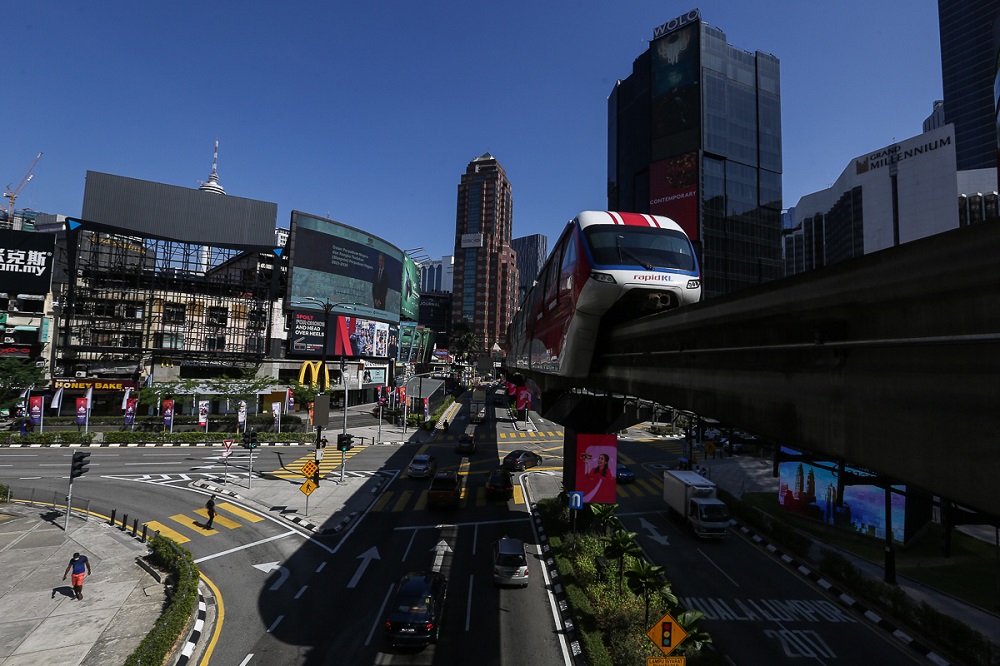Published in Asia News Today, Astro Awani, Malay Mail, Business Today, Focus Malaysia, & MYsinchew, image by Asia News Asia.
As of July 13, our daily cases reached 11,079.
But not all are in agreement on the necessity of lockdowns. Some are even calling for an outright abandonment of lockdowns in toto (i.e., completely) and in situ (i.e., immediately) to contain the Covid-19 pandemic – arguing that the costs outweigh the benefits.
Although well-intentioned, it’s a call for a premature end to lockdowns before herd immunity by vaccination is achieved. A very risky proposition indeed – one that your average policy-maker is hard-pressed to assume.
While the economic, social and psychological impact can’t be underestimated and downplayed, right now the balance between lives and livelihoods is tilted towards the former.
As Director-General (DG) of the Ministry of Health Tan Sri Noor Hisham Abdullah has reminded us, without the lockdowns (including the enhanced movement control order or EMCO), our healthcare capacity would be even “more overstretched”.
Already in May, we were told that the hospital bed capacity has reached 85% usage which is dedicated just for Covid-19-related ICU cases alone.
By July, the percentage has nearly reached the tipping point (over 90%) or in some cases even exceeded the maximum capacity – so that the private sector has to increase its contribution of ICU beds alongside procurement of more beds from suppliers. In addition, there’s a critical need for ventilators and oxygen tanks also.
In fact, the DG has admitted that our healthcare capacity is on the brink of collapse. On July 7, the Klang Valley averaged 37 daily cases per 100,000 and an average 2.6 per cent increase for the week before that.
Thus, there’s an air of unreality or surrealism surrounding the call of those who tenaciously cling on to the tenets of the “Barrington Declaration” as embodying the anti-lockdown movement.
This leads us to the rehearsal of some basic facts.
Lockdowns are a form, albeit extreme, of physical or social distancing. They’re based on the scientific evidence of breaking the chain of transmission that thereby reduces the infectivity rate so that infections don’t peak or kept manageable with the view of gradually flattening the curve.
In turn, this situation ensures that the numbers don’t overwhelm and overstretch the healthcare services. Lockdowns apply at the borders too.
Whilst lockdowns are indiscriminate and therefore affects all – regardless of health and economic status – so is the Covid-19 virus. To state what’s obvious, there’s no ratio of infectibility as such between the healthy and non-healthy (co-morbidities). Both groups are equally susceptible to Covid-19.
Notwithstanding, for those who smoke or suffer from morbidity that’s respiratory and immune-related, the level of vulnerability is higher, including young adults (see e.g., “Medical Vulnerability of Young Adults to Severe COVID-19 Illness – Data from the National Health Interview Survey”, Sally H Adams et al, Journal of Adolescent Health, July 13, 2020).
Unlike influenza (virus A) which shares some similar epidemiological characteristics such as range of symptoms and mode of transmission, the case-fatality ratio (CFR) in Covid-19 is much higher – something that detractors wish to downplay.
What’s ignored is that those who die from Covid-19 may have been asymptomatic and hence not classified as such (see e.g., “Malaysia’s 0.4% Covid-19 Death Rate ‘Doesn’t Mean Anything Anymore’: Expert”, Code Blue @Galen Centre, April 13, 2021).
The irony is that if the healthcare services are overstrained, then the CFR will increase. This is so as there’s a correlation between level of healthcare provision and the CFR.
The Swedish experiment clearly demonstrates that a country cannot rely on natural herd immunity as the main tool (albeit alongside mass vaccination in tandem).
And let’s not forget the US experience under the Trump presidency too.
The opposite is New Zealand – often touted as the exemplar par excellence in terms of the lockdown strategy.
It’d be counter-argued that, of course, the standard operating procedures (SOPs) need to be put in place, including physical distancing measures. However, SOPs alone may be insufficient to halt the spread of the virus.
Other non-pharmaceutical interventions (NPIs) such as lockdowns would still have to be implemented – depending on the context.
Even in South Korea – where the lockdown strategy was never implemented but focused on quarantine measures only, certain establishments were shut down such as schools and entertainment centres. And to date, it has experienced three waves.
Advocates also underestimate the formation and existence of clusters that comes from prolonged exposure – as entailed in the absence of strict and full lockdowns so as to ensure some continuity in industrial and supply-chain activities and operations.
And there’s a correlation between workplace clusters and sporadic community transmissions – precisely because the transmission that originates from the former continues within the latter.
The three Cs of “confined”, “crowded” and “close” can’t be enforced with absolute precision and consistency, all the time. In short, SOPs will reduce but not eliminate the risk of infection, altogether – as human behaviour is impossible to predict.
But the reason why Malaysia keeps experiencing wave after wave is precisely because or either laxity/complacency in compliance or non-compliance secundum quid (i.e., in certain, qualified contexts).
Although not simpliciter (i.e., simply – non-compliance), Malaysians can be quite lax when it comes to e.g., social gatherings – as demonstrated by the Sabah state election and the Raya Aidilfitri visits. Even Ministers and politicians themselves who are supposed to set a good example are guilty as charged!
Furthermore, it could be argued that there’s a correlation between the level of SOP compliance and the risk level of infectivity rate – the basic reproduction number/value or R naught (R0) – due to the two of the three underlying variables/derivatives, i.e., the likelihood of transmission of infection per contact between a susceptible person and an infectious individual as well as the contact rate.
In turn, the R0 can be estimated based on epidemiological models reliant on contract-tracing data which in the case of Malaysia is primarily based on our MySejahtera app.
Heavy reliance on compliance doesn’t take into account that, e.g., temperature sensors may miss out on the presence of asymptomatic carriers.
Therefore, a lower level of SOP compliance increases the risk level of the infectivity rate.
The ratio between symptomatic to asymptomatic carriers (as after testing) could be as high as 0.6, i.e., 60% of cases tested positive involving asymptomatic carriers (“Estimation of undetected symptomatic and asymptomatic cases of COVID-19 infection and prediction of its spread in the USA”, Ashutosh Mahajan et al, Journal of Medical Virology, February 23, 2021).
Or even reaching 80%/0.8 (“COVID-19: What proportion are asymptomatic?”, Carl Heneghan et al, The Centre for Evidence-Based Medicine (CEBM), April 6, 2020; see also “SARS-CoV-2 Transmission from People Without COVID-19 Symptoms”, Jama Network, January 7, 2021).
In all of these studies, stochastic analysis is employed rather than the standard equilibrium analysis which sucks out the real-world context and reducible to a simplistic model of only two variables.
In the case of Malaysia, it could be as high as 70% (see “Covid-19: 70% of cases in Malaysia were asymptomatic, says Health DG, The Star, July 8, 2020).
Secondly, lockdowns are critical to pre-empt the next wave from developing or, failing that, to contain it.
Laxity in SOP compliance (when it comes to physical/social distancing safety measures including living conditions as especially true for foreign worker dormitories) is compounded by the emergence of variants such as Delta which has a higher level of transmissibility, for example.
The D-G has explained that although within 10 days of the imposition of MCO 3.0, the curve was flattened from “9020 cases to 5000 and 4,000 cases”, one of the factors for this rise again “is due to Covid-19 variants. The dominant variant now is the [D]elta variant [which] spreads very quickly” (“Delta wreaking havoc in Klang Valley, cases to fall once 40pct vaccinated: Health DG”, Malaysiakini, July 13, 2021).
Now, the Delta variant is known to have an infectivity rate of between five and eight. This means that for every 100 people infected, they are capable of infecting 800 more people.
In the final analysis, the real issue is our current levels of SOP compliance.
Secondly, it’s over what kind of lockdown strategy.
Between lockdown versus no-lockdown, in the context of Malaysia with its highly inconsistent degree of non-compliance, lockdown is definitively the lesser of the two evils.
A synthesis between a full MCO and targeted (E)MCO could still be had. But this requires closer cooperation and collaboration between all the stakeholders – federal, state and private sector.
To conclude – as Keynes once famously said, “When the facts change, I change my mind”.
Jason Loh Seong Wei is Head of Social, Law & Human Rights at EMIR Research, an independent think tank focused on strategic policy recommendations based on rigorous research.

